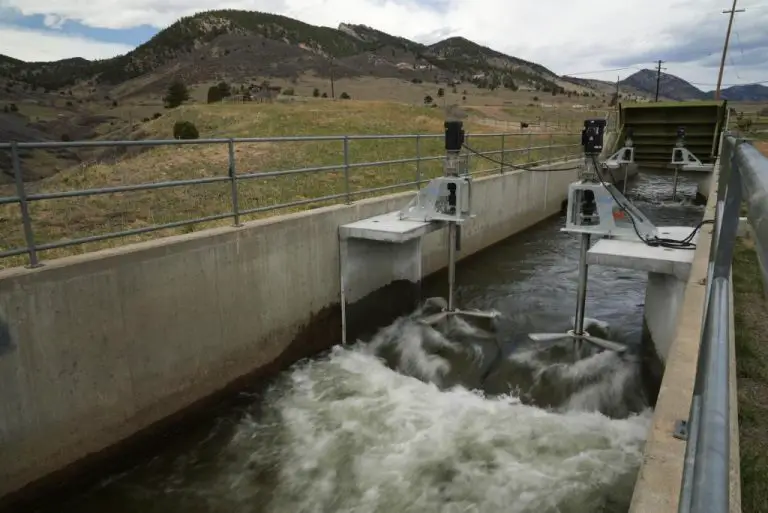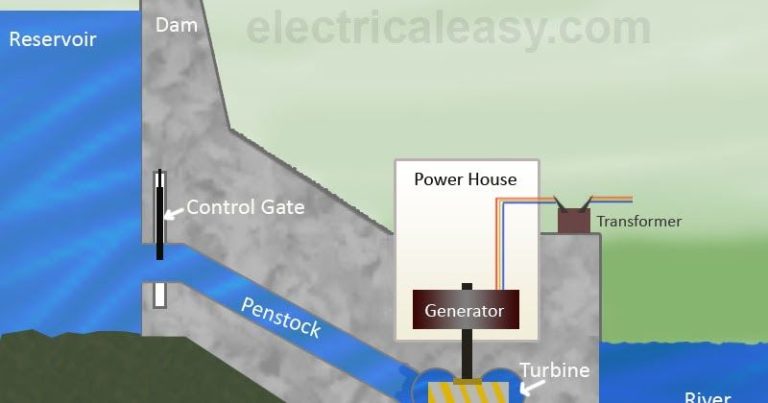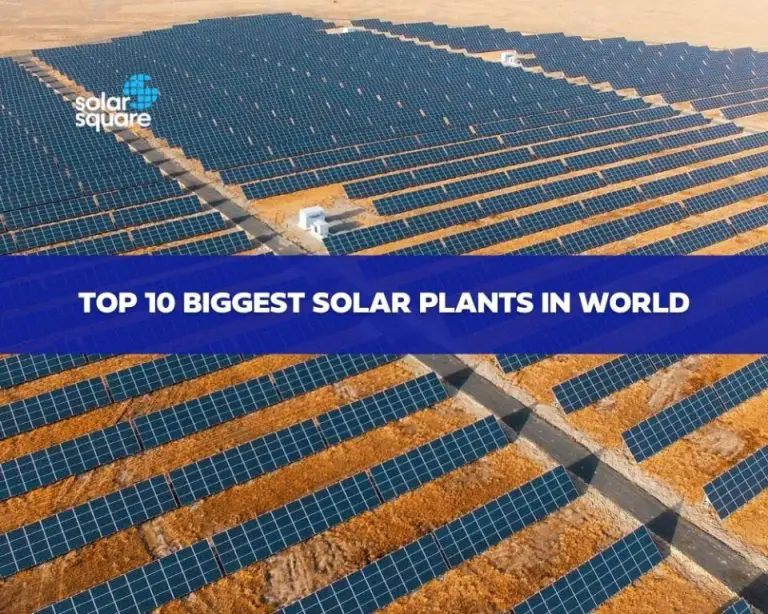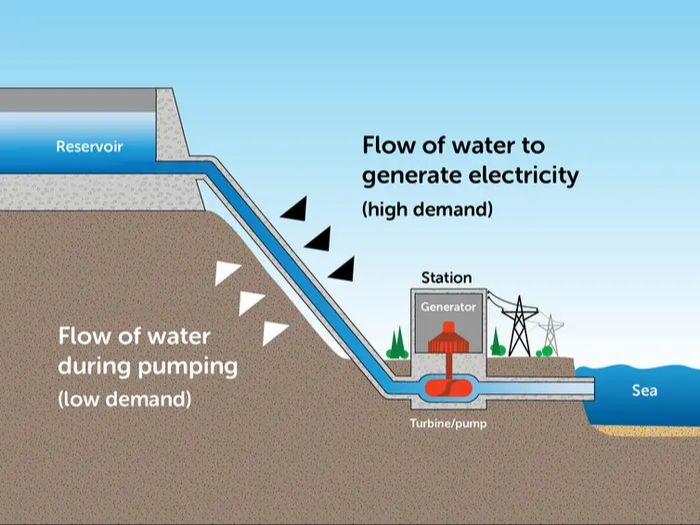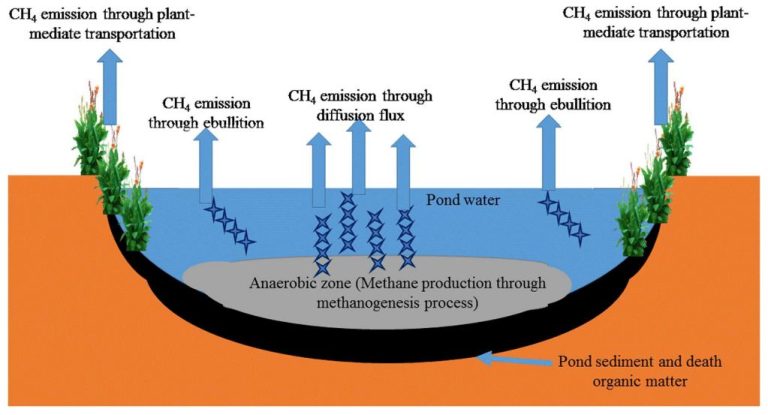What Is The Cheapest Source Of Large Scale Renewable Energy?
Renewable energy comes from natural sources or processes that are constantly replenished. Sources of renewable energy include solar, wind, hydropower, geothermal, and biomass. Unlike fossil fuels which are finite, renewable energy is sustainable and does not produce greenhouse gas emissions. Renewable energy is a key solution for addressing climate change, reducing pollution, and building energy security. The main renewable energy sources and their estimated costs are:
- Solar power: 4-8 cents/kWh
- Wind power: 2-6 cents/kWh
- Hydropower: 3-5 cents/kWh
- Geothermal: 4-7 cents/kWh
- Biomass: 5-15 cents/kWh
The goal of this article is to analyze these major renewable energy sources and determine which provides the cheapest option for large-scale implementation. Understanding the most affordable renewable technologies is key for expanding sustainable energy production globally.
Hydropower
Hydropower, also called hydroelectric power, generates electricity by using the energy from flowing water. A hydropower plant captures the energy of falling or flowing water to produce electricity. Hydropower plants consist of a dam that holds back water and creates a reservoir, and a powerhouse where the electricity is produced.
The water behind the dam flows through an intake and pushes against blades in a turbine, causing them to rotate. The turbine spins a generator to produce electricity. The amount of electricity that can be generated depends on the volume of water flow and the height from which it falls. After going through the turbine, the water flows out a discharge back into the river downstream.
Some of the pros of hydropower are that it is a renewable energy source, produces no greenhouse gas emissions, and once built has relatively low operating costs. However, it does have some limitations. Building large dams and reservoirs can negatively impact the surrounding environment and ecosystems. Also, output depends on rainfall and adequate water flows, which can vary seasonally.
According to the International Renewable Energy Agency, the levelized cost of electricity for large hydropower projects typically ranges from US$0.02 to US$0.19 per kWh. This makes hydropower one of the lowest-cost sources of renewable energy (Renewable Energy Cost Analysis: Hydropower, IRENA).
Wind Power
Wind power utilizes wind turbines to harness the kinetic energy in wind and generate electricity. As wind blows across the blades of the turbine, the rotor spins, turning an attached generator to produce electricity. Utility-scale wind farms consist of many wind turbines spread across large areas with strong wind resources.
Wind power has become one of the fastest growing renewable energy sources globally. According to the Center for Sustainable Systems, wind energy purchase contracts in the U.S. averaged around 2.5¢ per kWh in 2020-21, making it highly cost competitive with other sources [1]. The levelized cost of onshore wind energy ranges from 3-7 cents per kWh, while fixed offshore wind costs 4-9 cents per kWh [2].
Some advantages of wind power include its low operating costs, zero emissions, and rapidly declining costs. However, wind power does have limitations. Wind is an intermittent resource, so energy output fluctuates based on weather conditions. The best wind sites are often located far from load centers. Wind farms also require large amounts of land and can raise environmental concerns related to birds/bats and visual/noise impacts.
Solar Power
Solar power uses energy from the sun to generate electricity. There are two main types of solar power technology:
- Photovoltaics (PV) which convert sunlight directly into electricity using solar panels.
- Concentrated solar power (CSP) which uses mirrors to concentrate sunlight to heat a fluid and produce steam to drive a turbine and generator.
Some pros of solar power include:
– Renewable and clean energy source with low emissions.
– Can be installed on roof tops or open land.
– Modular systems that can start small and expand over time.
– Lower electricity bills once system is paid off.
Some cons and limitations include:
– High upfront costs to purchase and install a system.
– Output depends on sunshine – doesn’t work well on cloudy days or at night.
– Large land area needed for utility-scale solar farms.
– Some toxic materials used in manufacturing solar panels.
The cost per kWh for solar power ranges from $0.13 to $0.20 in most of the U.S. as of 2024, according to SolarReviews. This is cheaper than the residential electricity price, which averages $0.14/kWh across the nation.
Geothermal
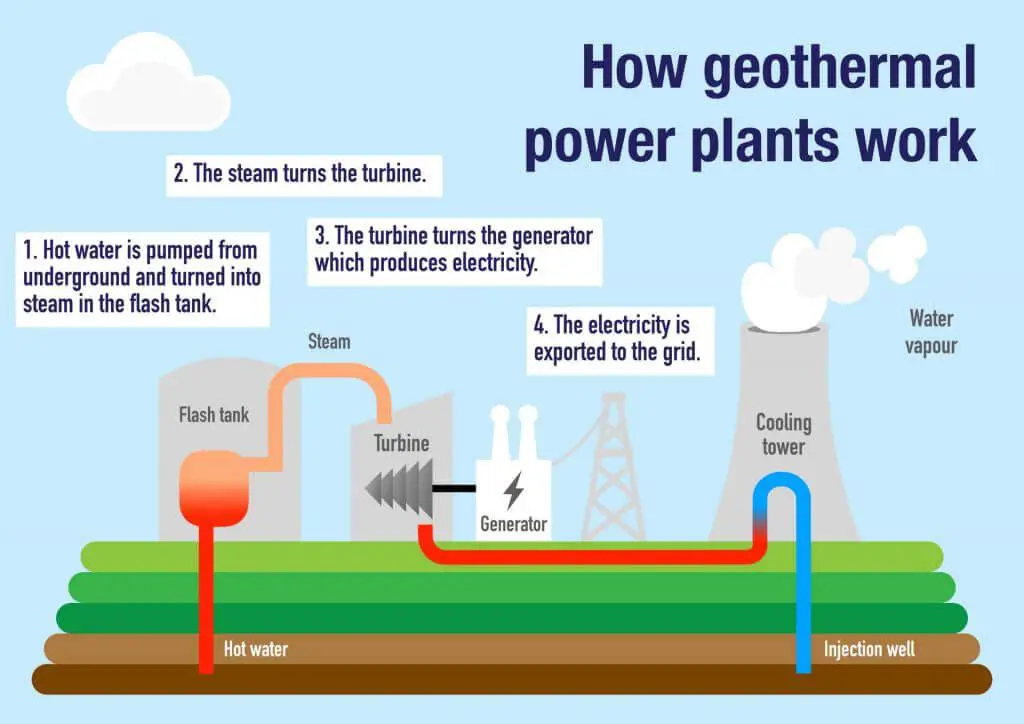
Geothermal power utilizes heat from the Earth’s interior to produce steam to drive turbines and generate electricity. Wells are drilled into geothermal reservoirs deep underground to extract hot water or steam. The steam rotates turbines connected to power generators to produce electricity. After the steam has passed through the turbines, condensed steam and gases are injected back into the reservoir to be reheated.
Some pros of geothermal power include its reliability as a baseload power source and its low emissions. However, geothermal has limitations. Geothermal reservoirs with ideal temperatures for electricity generation are not ubiquitous and exist mainly in tectonically active regions like western North America. Additionally, geothermal plants are capital intensive to build. According to the International Renewable Energy Agency, the levelized cost of geothermal electricity ranged from $0.049 to $0.085 per kWh between 2010 and 2020.
Biomass
Biomass power or bioenergy is the process of producing electricity from plant materials like trees, grasses, forest residues, and agricultural waste. The plant materials are burned directly in power plants to produce heat which is used to generate steam to drive turbines and create electricity. The main types of biomass power plants include direct-fired, co-fired, and gasification systems.
Some pros of biomass power are that it can provide constant baseload power and supports rural economies that produce biomass materials. It is also considered carbon neutral since the plant materials absorb CO2 while growing which offsets the emissions from burning. Some cons are that it requires large amounts of land and water resources to produce the biomass fuel. There are also challenges withlow boiler efficiency and high transportation costs. Biomass power plants require more frequent maintenance than fossil fuel plants.
According to the US Energy Information Administration, the levelized cost of electricity from new biomass power plants is around $102.80 per MWh. This makes it one of the more expensive renewable energy options, about two to four times higher than the cost of onshore wind or utility-scale solar. However, biomass can provide firm power and capacity that variable renewables like wind and solar cannot.
Overall, biomass can be a viable renewable baseload power source in some situations, but it faces limitations with high fuel costs, land use requirements, and low efficiency compared to other renewable options.
Cost Comparison
When comparing renewable energy sources strictly on cost per kWh, hydropower is generally the cheapest option. According to an analysis by the Distributed Energy blog, the levelized cost of energy (LCOE) for hydropower ranges from $0.02 to $0.19 per kWh, making it very cost competitive with fossil fuels and cheaper than other renewables (https://de.energy/blog/comparing-renewable-energy-costs/). The LCOE for onshore wind ranges from $0.04 to $0.09 per kWh, while solar PV is $0.06 to $0.15 per kWh. Geothermal and biomass can be more expensive at around $0.05 to $0.15 per kWh.
However, there are other factors to consider beyond just costs per kWh when comparing large-scale renewable energy sources. Hydropower requires substantial upfront investments and suitable geography, with best potential in mountainous regions with rivers. Wind and solar need large open spaces with consistent wind or sunlight. Geothermal is limited to geologically active areas with accessible subsurface heat. And biomass requires abundant sources of organic matter for conversion. So while hydropower may be the cheapest on paper, the viability and large-scale potential of renewables depends greatly on geographic location and resource availability (https://www.researchgate.net/figure/a-Comparing-renewable-energy-costs-according-to-Ontarios-FIT-program-for-electricity_fig1_358859878).
Large-Scale Viability
When considering large-scale viability of renewable energy options, hydropower stands out as having high scalability and capacity factors compared to other sources. Hydropower is considered a mature technology that can be deployed at large-scale with capacities in the gigawatts (GW). For example, the Three Gorges Dam in China has a capacity of 22.5 GW, making it the largest hydroelectric power station in the world by installed capacity (1).
In terms of capacity factors, hydropower can achieve 40-60%, higher than wind and solar which tend to range from 20-40% (2). This means hydropower can reliably generate a greater percentage of its maximum capacity over time. The main limitations for large-scale hydropower are suitable topography and availability of water resources. Overall, hydropower has proven viability for large-scale, gigawatt-level deployment of renewable energy.
(1) https://www.reddit.com/r/ModernMagic/comments/107gvvw/viability_of_hardened_scales/
(2) https://medium.com/innovation-sweet-spot/desirability-feasibility-viability-the-sweet-spot-for-innovation-d7946de2183c
Other Considerations
There are several broader factors beyond just cost that should be weighed when evaluating renewable energy sources. Environmental impacts, public perception, government incentives, and long-term sustainability impact viability and adoption.
Renewable energy is favored for its lower environmental footprint. For example, hydropower emits much less greenhouse gases compared to fossil fuels (Renewable Energy Investing). However, large hydroelectric dams can disrupt wildlife habitats and ecosystems. Wind and solar have minimal environmental impacts after installation.
Public opinion polls show widespread favorability towards renewable energy, though concerns exist regarding aesthetics (large wind/solar farms), bird/wildlife impacts, and energy storage technology (Renewable Energy Site Selection Factors). Community engagement and education help gain public acceptance.
Government subsidies, tax credits, and favorable policies incentivize renewable energy adoption. However, changing political priorities risk policy instability and uncertainty (Renewable Project Evaluation). Policy incentives like carbon pricing can improve cost-competitiveness.
As technology advances, renewable energy will become more efficient, affordable and reliable. But inherent intermittency (solar, wind) requires integration with storage, transmission, and grid management solutions for large-scale, continuous use.
Conclusion
Renewable energy costs have declined dramatically in the last decade, making them competitive with conventional energy sources. Based on the analysis, onshore wind and utility-scale solar PV appear to be the cheapest options for new large-scale renewable energy projects. While hydropower and geothermal can provide low-cost renewable electricity in some locations, wind and solar have proven the ability to scale cost-effectively on a global basis.
Onshore wind energy currently has the lowest average levelized cost, making it the most economical choice for new renewable energy projects in many regions. The global weighted average LCOE for onshore wind is around $50 per MWh. Utility-scale solar PV is a close second, with global average costs of $60 per MWh and continued rapid cost declines expected.
Going forward, the outlook for wind and solar remains positive. Technology improvements, manufacturing scale and supply chain efficiencies will further drive down costs. Supportive government policies can accelerate deployment. Overall, the renewables revolution is well underway and onshore wind and solar PV are leading the charge as the cheapest sources of new large-scale renewable energy worldwide.

